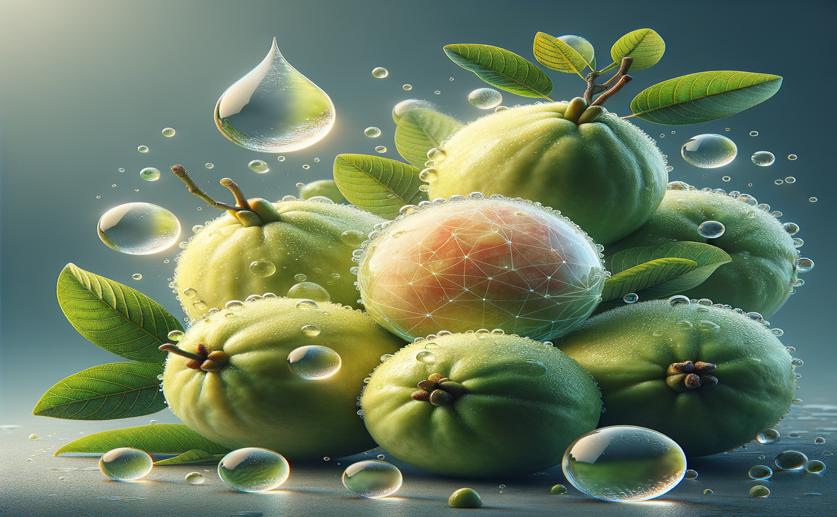
Edible Coating Keeps Guavas Fresh by Managing Natural Processes
Jenn Hoskins
24th May, 2024

Image Source: Natural Science News, 2024
Key Findings
- Researchers at Bahauddin Zakariya University found that xanthan gum (XG) coatings can extend the shelf life of guava fruits by reducing moisture loss and decay
- The study showed that guavas coated with 0.75% XG had the least weight loss and highest firmness retention over a 15-day storage period
- XG coatings also delayed changes in skin color and maintained higher levels of titratable acidity and ascorbic acid, which are important for fruit quality
References
Main Study
1) Xanthan gum-based edible coating effectively preserve postharvest quality of ‘Gola’ guava fruits by regulating physiological and biochemical processes
Published 23rd May, 2024
https://doi.org/10.1186/s12870-024-05117-1
Related Studies
2) Use of edible coatings based on hydroxypropyl methylcellulose and beeswax in the conservation of red guava 'Pedro Sato'.
3) Chitosan delays ripening and ROS production in guava (Psidium guajava L.) fruit.
4) Carboxymethyl cellulose coating delays ripening of harvested mango fruits by regulating softening enzymes activities.



 29th January, 2024 | Mary Jones
29th January, 2024 | Mary Jones